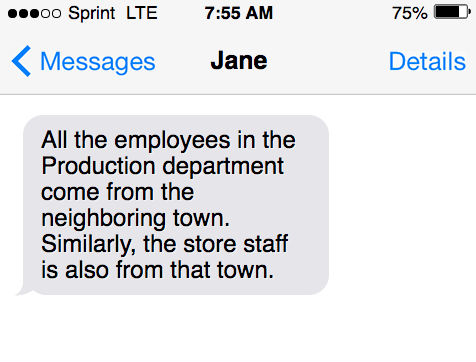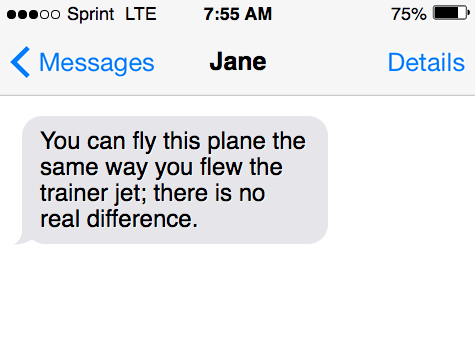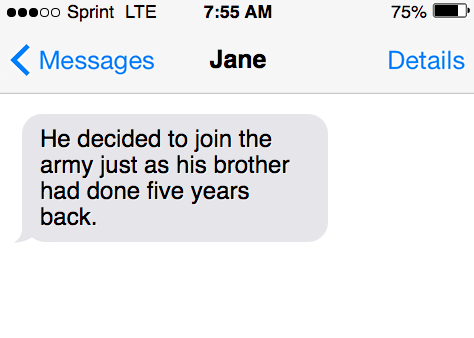What are transition sentences? And how do they work? Is there a correct way to use them? And an incorrect way? Understanding transition sentences is critical when writing essays, articles, or any type of logical flow.
Learn what transitional sentences are in this short guide…
What are transition sentences?
When you write an article, essay (or anything), you’ll want to write it in a logical sequence. You start with an introduction, highlight your points, and then end with a conclusion. Throughout your writing, you would be using sentences to express your thought. To make your writing effective, you need to link the sentences together in a logical way.
This is where transition sentences can be helpful.
As the name suggests, a transition sentence links the thoughts you are expressing in your writing. They make use of words and phrases that act as a bridge between different parts of your writing.
Transition sentences allow your reader to move smoothly from one section to another. Without transition sentences, your reader might not be able to understand the link between different parts of your writing.
What makes a good transition sentence?
Look at this example:
The CEO was very clear that productivity and efficiency were the two key things he would focus on. However, the legacy systems followed by the company acted as a detriment. Tech modernization was the solution that would enhance productivity and efficiency.
Sentences one and three make sense by themselves. But it is important to establish a relationship between the two. This is what the second sentence does. It acts as a bridge (or transition) between the first and third sentences. By doing so, it helps the writer communicate their ideas more effectively.
A good transition sentence would bring clarity by linking ideas expressed in the sentences before and after it. Words and phrases like ‘however,’ ‘in contrast,’ ‘for instance,’ ‘in fact,’ and ‘therefore’ can get used to help make the transition.

Many transition words are available to use. Choose the appropriate word for the situation.
For example, if you want to show the sequence between two sentences, you can use a word like ‘then’ or ‘after.’ If you want to emphasize a point through the transition, you can use ‘indeed,’ ‘especially,’ or ‘particularly.’
Transition words can be used at the start of the sentence (e.g., Surely, you are not going to go now!). It can also be used within the sentence (e.g., I rejected the job offer because the salary was lesser than my present pay).
Here are a few tips that will help you use transition words correctly:
- When sentences within a paragraph sound abrupt or awkward, you need to use transition words to link them.
- Choose the correct transition word that is appropriate to the situation. A wrong selection can make your reader confused.
- When moving from one idea to another, use a transition word to let the reader know.
- Don’t make the mistake of overusing transition words. Too many transition words can end up making your writing look messy.
List of words for transition sentences
Some common words used in transition sentences are:
- And
- But
- Or
- First
- Then
- Next
- Furthermore
- Henceforth
- Nevertheless
- Similarly
- Since
- Specifically
- Also
- Moreover
- Almost
- Finally
List of phrases for transition sentences
Transition sentences would use both words and phrases as the bridge. A few phrases that are used include:
- In other words
- As well as
- On the contrary
- As a result
- In other words
- In the long run
- As you can see
- In the following
- In the previous
- Having established
- Most importantly
- Because of
- For example/instance
- By the time
5 Examples of Transitions (Types of Transitions)
Conjunctive adverbs can be used to establish the logical link between ideas. They can be classified under five heads. It must be noted some words appear in multiple categories.
Of addition
The following example will make this clear.
First, put a pan on the stove and heat it. Next, add oil to the pan.
In the above, first and next act as the transition and are adding on to what is being said previously.

Of contrast
These words establish a contrast or difference while making the transition.
- However
- In contrast
- Although
- On the contrary
- Otherwise
- Still
- Yet
- Even though
- But
- At any rate
- In spite of that
- Instead
- On the other hand
The island was not the paradise we were hoping for. On the contrary, it was dirty, noisy, and had unmanageable traffic.
The above example brings out a contrast between expectations and reality.
Of comparison
- By comparison
- Also
- Equally
- Likewise
- In the same way
- In the same manner
- Similarly
- Next
Jonathan is crazy about chess. His daughter is similarly a big fan of the board game.
In this example, the word similarly shows a comparison between father and daughter. You may note the transition word need not be at the start of the sentence. It can be placed anywhere.
Of result
These transition words are indicative of a result. It shows the result of the previous sentence/idea.
- Therefore
- Hence
- Consequently
- Thus
- As a result
Their star player was suffering from a hamstring injury and could not play. Hence, their team faced a humiliating defeat on match day.
The star player’s absence resulted in the team’s defeat. The transition word ‘Hence’ in the example is the bridge between the cause/event and the result.

Of time
Some transition words show relationships in time. They include:
The speaker will be a bit late for the talk. Meanwhile, let’s ask the participants to share their views on the program.
As the speaker will be late, there is time left. So, the participants are asked to share their views and opinions. In this example, ‘Meanwhile’ is a transition word that shows relationship to time.
Subordinating conjunctions and transition sentences
You can use a subordinating conjunction in a sentence to join a dependent clause to an independent clause.
Example: When the postman came, my dog greeted him with a volley of barks.
In this example, the word ‘when’ is the subordinating conjunction that joins ‘the postman came’ and ‘my dog greeted him …’
The subordinating conjunction serves a special purpose here. It acts as a transition between two ideas. The use of the coordinating conjunction provides a logical flow.
Example: He is smarter than you are.
In this example, “than” is the subordinating conjunction that connects ‘He is smarter’ and ‘you are.’ It provides the bridge or transition between the two clauses.
Let’s look at another example to understand this. There are two clauses – ‘The spring arrives’ and ‘my hay fever gets aggravated. A subordinating conjunction can link the two. We can use ‘As’ here. So, the sentence would now read – ‘As the spring arrives, my hay fever gets aggravated.’
Correlative conjunctions and transition sentences
The correlative conjunction shows a correlation between two words or phrases within a sentence. They play a key role in transition sentences. The use of a correlative conjunction ensures a smooth flow between two sentences or ideas.
Example: My boss totally ignored my work. Neither my hard work nor my punctuality impressed him. So, I decided to move on and look for a new job.
In the above example, sentences one and three are independent and convey the meaning clearly. However, the second sentence acts as a transition explaining why sentence one leads to sentence two.
In the second sentence, we see the use of neither … nor. This combination of words acts as correlative conjunctions in this example.
Some other words that work as correlative conjunctions are:
- Either … or
- Neither … nor
- Both … and
- Not … but
- Whether … or
- Not only … Also
Whether you want to have dinner or prefer to skip it is entirely left to you.
The above example uses Whether … or as correlative conjunctions in the sentence.
Examples of transition sentences
Examples of transition sentences:
Communicate similarities
To communicate similarities, you can use transitional words like:
- Also
- Likewise
- Similarly
- In the same way
- Just as
- So too
Examples of sentences where the transition word communicates similarities:
- He decided to join the army just as his brother had done five years back.
- You can fly this plane the same way you flew the trainer jet; there is no real difference.
- All the employees in the Production department come from the neighboring town. Similarly, the store staff is also from that town.
Express emphasis
Words like ‘especially,’ ‘above all,’ ‘particularly’, ‘indeed,’ in fact,’ and ‘in particular’ can be used to express emphasis. When used in transition sentences, they emphasize the idea express previously.
Examples
- She was overweight. In fact, it won’t be wrong to say she was grossly obese.
- I liked the blue dress in particular.
- Indeed, it won’t be wrong to say that her arrogance led to the engagement’s breakup.
- There is a lot of focus on improving public services, especially education.
Cause and effect
Transition sentences can be very helpful in showing cause and effect or result. The following words can be used for this:
- Consequently
- Finally
- Accordingly
- As a result
- At that time
- Hence
- So then
- Subsequently
- Therefore
- Thus
Examples
- They spent the entire semester binge-watching shows. Consequently, they failed to obtain pass marks on any of the papers.
- There are just ten items left in stock. Hence, it would be better if we suspend taking new orders at present.
- The tests revealed that his blood pressure and cholesterol levels were very high. As a result, the doctor decided that he had to increase the dosage of his medicines.
Position
Position or place can be indicated through the use of transition words like:
- Above
- Below
- Adjacent
- Next
- Here
- In front
- Beyond
- At the back
- Nearby
- There
Here are some example sentences:
- Walk towards the bookshelf. Adjacent to the shelf is a table, that’s where you will find the money.
- The house was located a few yards from the river. Next to the house was the scary-looking tree.
- You will see the building with the red flag. The storeroom is at the back of this building.
Describe a sequence
Transition words are perfect to use while describing a sequence. The words that can be used are:
- First
- Second
- Next
- Then
- Previously
- Subsequently
- After
- At that time
- Followed by
- Initially
- Finally
Here are some example sentences:
- First, write down all the numbers in the form of a list. Next, add all the numbers. Finally, write down the total.
- Initially, three employees were working on the project. Subsequently, the project grew the numbers rise to twenty.
- The private plane owned by the CEO was the first to land. This was followed by the helicopter containing the crew.
To show examples
Transition words can be used to show examples or illustrate a particular point. Some words to use are:
- For example
- For instance
- Illustrated by
- As an example
- In this case
- On this occasion
- Specifically
- To illustrate
- To demonstrate
- Markedly
Here are some example sentences:
- The speaker displayed the blueprint of the equipment on the screen. To illustrate its working, he showed a video.
- There are seven tools you can use to solve this problem. As an example, I will talk about the fishbone diagram.
- Different essential oils can help you feel relaxed. For instance, using lavender oil makes you feel refreshed and rejuvenated.
How to use transition sentences between paragraphs
Transition sentences can get used within a paragraph. It also can get used between paragraphs.
This is important since the transition sentence provides a flow between paragraphs. It allows the readers to understand the relationship between the ideas expressed in those two different paragraphs.
When you start writing a paragraph, show a link to the previous paragraph in the first sentence. This establishes a bridge between both paragraphs.
Here’s an example:
There is no doubt that the effects of pollution by industries. This is why activists call for a ban on industries to stop pollution.
Despite the previous argument, we must also think about the economy. Banning industries will bring the economy to a standstill.
This example, ‘despite the previous argument’ is used to transition between the two paragraphs.
In contrast, the first part calls for a ban on industries, and the second discusses the economic effect. Using a transition allows for a smooth flow between the two.
Examples of transition sentences for essays
The use of transitions is very important in essays. An essay is written to convey an idea, opinion, or viewpoint. To ensure its effectiveness, transition sentences are needed at different parts of the essay. Transition sentences are needed between sentences, between sections, and at the conclusion of the essay.
A few examples of this:
- Having established that a large majority of students have internet access, we can conclude that e-learning is a distinct possibility.
- All the employees have a smartphone. In fact, most of them connect to the company’s Wi-Fi using their phone.
Examples of transition words for concluding sentences
Transition sentences are used throughout a write-up. It is imperative that the conclusion also has a transition. Your write-up needs to end with a summary of what you are trying to say. Or with a call-to-action. Using transition words in the conclusion can help you achieve this.
A few transition words you can consider using are:
- Finally
- In conclusion
- As shown above
- To sum up
- On the whole
- Generally speaking
- In short
- To summarize
- Ultimately
Examples:
- To summarize, sustained use of this medicine offers significant benefits to patients.
- In summary, democracy has many limitations but no other acceptable alternative.
- Ultimately, it all boils down to the decision taken by the customer.
- In short, the best option available is to get funds from a new investor.
Sentence structure
More on sentence structure:
Sources
- Transition Sentences Tips and Examples for Clear Writing
- Transitional devices
- How to Use Transition Sentences for Smoother Writing
- Transition Words: Examples in Sentences, Paragraphs & Essays
Inside this article
Fact checked:
Content is rigorously reviewed by a team of qualified and experienced fact checkers. Fact checkers review articles for factual accuracy, relevance, and timeliness. Learn more.
Core lessons
Glossary
- Abstract Noun
- Accusative Case
- Anecdote
- Antonym
- Active Sentence
- Adverb
- Adjective
- Allegory
- Alliteration
- Adjective Clause
- Adjective Phrase
- Ampersand
- Anastrophe
- Adverbial Clause
- Appositive Phrase
- Clause
- Compound Adjective
- Complex Sentence
- Compound Words
- Compound Predicate
- Common Noun
- Comparative Adjective
- Comparative and Superlative
- Compound Noun
- Compound Subject
- Compound Sentence
- Copular Verb
- Collective Noun
- Colloquialism
- Conciseness
- Consonance
- Conditional
- Concrete Noun
- Conjunction
- Conjugation
- Conditional Sentence
- Comma Splice
- Correlative Conjunction
- Coordinating Conjunction
- Coordinate Adjective
- Cumulative Adjective
- Dative Case
- Determiner
- Declarative Sentence
- Declarative Statement
- Direct Object Pronoun
- Direct Object
- Diction
- Diphthong
- Dangling Modifier
- Demonstrative Pronoun
- Demonstrative Adjective
- Direct Characterization
- Definite Article
- Doublespeak
- False Dilemma Fallacy
- Future Perfect Progressive
- Future Simple
- Future Perfect Continuous
- Future Perfect
- First Conditional
- Irregular Adjective
- Irregular Verb
- Imperative Sentence
- Indefinite Article
- Intransitive Verb
- Introductory Phrase
- Indefinite Pronoun
- Indirect Characterization
- Interrogative Sentence
- Intensive Pronoun
- Inanimate Object
- Indefinite Tense
- Infinitive Phrase
- Interjection
- Intensifier
- Infinitive
- Indicative Mood
- Participle
- Parallelism
- Prepositional Phrase
- Past Simple Tense
- Past Continuous Tense
- Past Perfect Tense
- Past Progressive Tense
- Present Simple Tense
- Present Perfect Tense
- Personal Pronoun
- Personification
- Persuasive Writing
- Parallel Structure
- Phrasal Verb
- Predicate Adjective
- Predicate Nominative
- Phonetic Language
- Plural Noun
- Punctuation
- Punctuation Marks
- Preposition
- Preposition of Place
- Parts of Speech
- Possessive Adjective
- Possessive Determiner
- Possessive Case
- Possessive Noun
- Proper Adjective
- Proper Noun
- Present Participle
- Prefix
- Predicate



